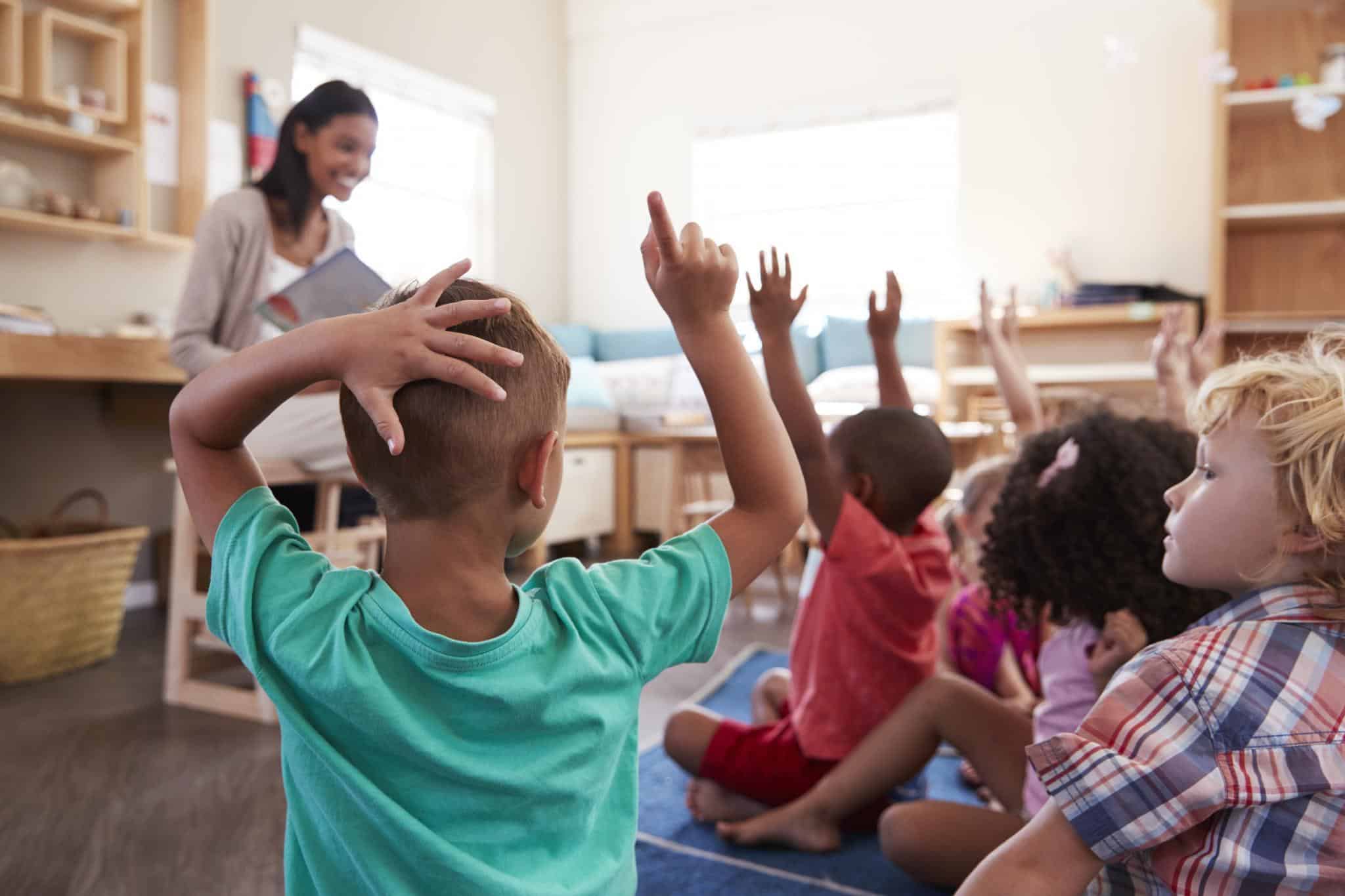At the foundation of early education is the belief that all students have inherent worth and should be treated with equity. Regardless of a child’s gender, socioeconomic status, or other background factors, every person has the ability to succeed in school.
But even when we want to promote tolerance, subconscious attitudes can prevent us from treating students fairly.[6] These attitudes are called implicit biases, and they often rely on inaccurate or stereotyped information. If we’re unaware of them, however, they can be particularly difficult to correct.
By understanding your own implicit biases, you can make your classroom a safer place for everyone. Read on to discover a few examples of implicit bias and how educators can combat them to promote diversity in schools.
Defining Implicit vs. Explicit Bias
 To better understand how teachers can prevent implicit stereotypes from entering the classroom, it’s important to understand what, exactly, they are. The definition of implicit bias is an unconscious attitude or stereotype that affects our actions, beliefs, and memories.[1] When we’re unaware of these attitudes we may hold, they can lead to unintentional discrimination.[21]
To better understand how teachers can prevent implicit stereotypes from entering the classroom, it’s important to understand what, exactly, they are. The definition of implicit bias is an unconscious attitude or stereotype that affects our actions, beliefs, and memories.[1] When we’re unaware of these attitudes we may hold, they can lead to unintentional discrimination.[21]
Why do implicit biases happen? Our minds process about 11 million bits of information every second, so our brains often resort to stereotypes as a shortcut to make sense of so much information quickly.[9] The more information we’re exposed to, even if the information is unfair or inaccurate, the stronger and more deeply ingrained our biases become. Our cultural backgrounds, lived experiences, and exposure to certain beliefs can all contribute to our implicit biases.[22]
There is a difference, however, between an implicit and an explicit bias. Explicit biases are conscious attitudes that a person holds, which can be measured through self-reports in ways that implicit ones can’t. In many cases, a person’s explicit biases might not match their implicit biases.[8] Someone could, for example, explicitly believe in gender equality but implicitly treat women unfairly.
Though unintentional, these subconscious attitudes can create destructive outcomes like gender or racial biases in education.[22] For this reason, it’s all the more important for teachers to recognize and overcome their implicit stereotypes.
Implicit Bias Can Worsen the Achievement Gap in Education
 Even when teachers have good intentions, implicit biases can cause unfairness and discourage diversity in education.[9] Part of this is because the makeup of the teaching field does not represent the demographic of students they serve. Minority groups, for example, make up over half of all U.S. students, yet 84% of all teachers are white.[1] In part because of implicit biases, minority students are at a higher risk for school failure and negative experiences with their teachers.[17]
Even when teachers have good intentions, implicit biases can cause unfairness and discourage diversity in education.[9] Part of this is because the makeup of the teaching field does not represent the demographic of students they serve. Minority groups, for example, make up over half of all U.S. students, yet 84% of all teachers are white.[1] In part because of implicit biases, minority students are at a higher risk for school failure and negative experiences with their teachers.[17]
Because of this disparity between minority students and their predominantly white teachers, an educator’s implicit biases can cause them to project different outcomes for marginalized students and unconsciously help them less.[14] Achievement gap statistics show that children from under-resourced and minority families are most likely to fall behind in school, but not due to their own potential. And due to limited time and resources at home, many under-resourced children are already behind by the time they enter school.[20]
Unconscious racial bias is one of the biggest barriers to closing the achievement gap between white children and students of color, particularly those who come from under-resourced homes.[12] In these cases, socioeconomic disparities between students and social segregation within schools can also worsen existing achievement gaps.[13] Without training on how to better accommodate these students and avoid implicit biases, teachers may treat them differently than their peers.
Teachers are most likely to act on their implicit biases in the following situations:[9]
- When they have vague or incomplete information about a topic or student
- When they’re acting under time constraints
- When they’re tired, burned out, or have a lot on their plate
Unfortunately, teaching is such an intensive job that many educators work under these situations every day. But culturally responsive teaching can help close the achievement gap and prevent discrimination in school.[11] By recognizing examples of implicit bias in education and making a conscious effort to improve, teachers can make their schools a better place for each of their students.
How to Use Implicit Bias Training to Embrace Diversity
Although many teachers understand the importance of diversity in schools, few are good at estimating their own implicit biases.[17] Teachers from privileged backgrounds, for example, are more likely to show subconscious biases than their colleagues with marginalized identities.[15] Luckily, educators are starting to understand the benefits of inclusion training to combat implicit bias and close the achievement gap.
Implicit bias is like a bad habit: with practice and self-awareness, we can reduce it over time. A 12-week study found that implicit bias training can significantly reduce racial biases.[2] In addition to implicit bias activities and training, teachers can take an Implicit Association Test to discover their own subconscious stereotypes.
Harvard University’s Project Implicit offers a variety of free online tests to help people measure their implicit biases related to a variety of different factors, such as:[10]
- Race or ethnicity
- Disability
- Religion
- Skin tone
Simply being aware of what implicit biases are and how they can affect judgment can help educators better treat their students and colleagues with equity.[1] Adding antidiscrimination laws to your school or classroom rules can also help everyone feel safe and like they belong.[4] Additionally, administrators can work to hire faculty members from a variety of different backgrounds and lived experiences. Friendships and regular contact between people from different backgrounds is particularly proven to fight implicit bias.[3]
5 Tips and Activities That Promote Diversity in the Classroom
Teachers aren’t the only people who can make their schools a safer place through diversity training. Children also often display implicit biases from a young age, especially those who come from privileged backgrounds.[5] But luckily, implicit bias activities can teach students to avoid treating their peers unfairly because of subconscious stereotypes.
Use these five diversity activities and teaching tips to help your students recognize and overcome implicit biases against their classmates:
- Get-to-know-you games can help students bond over similarities instead of differences. Whether you’re closer to the first or last day of the school year, use icebreaker activities to bring your classroom together.[19]
- Mindful meditation can reduce implicit bias by encouraging reflection and self-awareness. If your class is too young for a full meditation session, try practicing breathing exercises instead.[7]
- Teach curriculum that promotes tolerance towards people of all backgrounds, particularly those from stigmatized groups.[8] A few children’s books that encourage inclusion are Last Stop on Market Street by Matt de la Peña and Christian Robinson, Chrysanthemum by Kevin Henkes, and Lovely by Jess Hong.
- Celebrate holidays that promote inclusivity in class, like Martin Luther King Jr. Day or Autism Awareness Month.
- Adapt school activities for students with disabilities so that every child in class can play. If you have a student who uses a wheelchair, for example, find ways to include them in outdoor games.[18]
Sources:
The National Education Association (NEA). Confronting Implicit Bias Through Exemplary Educator Preparation. Retrieved from nea.org: https://www.nea.org/assets/docs/23840%20Confronting%20Implicit%20Bias%20Thru%20Exemp%20Teacher%20Prep-v2.pdf.[1]
Devine, P.G., Forscher, P.S., Austin, A.J., Cox, W.T.L. Long-term reduction in implicit race bias: A prejudice habit-breaking intervention. Journal of Experimental Social Psychology, November 2012, 48(6), pp. 1267-1278.[2]
Aberson, C.L., Shoemaker, C., Tomolillo, C. Implicit Bias and Contact: The Role of Interethnic Friendships. The Journal of Social Psychology, June 2004, 144(3), pp. 335-347.[3]
Beagenstos, S.R. Implicit Bias, “Science,” and Antidiscrimination Law. Harvard Law and Policy Review, 2007, pp. 477-493.[4]
Newheiser, A., Olson, K.R. White and Black American children’s implicit intergroup bias. Journal of Experimental Social Psychology, January 2012, 48(1), pp. 264-270.[5]
Kelly, D., and Roedder, E. Racial Cognition and the Ethics of Implicit Bias. Philosophy Compass, May 2008, 3(3), pp. 522-540.[6]
Lueke, A., and Gibson, B. Mindfulness Meditation Reduces Implicit Age and Race Bias: The Role of Reduced Automaticity of Responding. Social Psychology and Personality Science, 2015, 6(3), pp. 284-291.[7]
Stanford Encyclopedia of Philosophy. Implicit Bias. Retrieved from stanford.edu: https://plato.stanford.edu/entries/implicit-bias/.[8]
Staats, C. Understanding Implicit Bias: What Educators Should Know. American Educator, 2015, 39(4), pp. 29-33.[9]
Project Implicit. Take a Test. Retrieved from harvard.edu: https://implicit.harvard.edu/implicit/takeatest.html.[10]
Howard, D. Want to Fix the Achievement Gap? Reconsider How You Teach. Retrieved from educationpost.org: https://educationpost.org/want-to-fix-the-achievement-gap-change-how-you-teach/.[11]
Harrington, T. Educator asks teachers to examine unconscious racial bias. Retrieved from edsource.org: https://edsource.org/2018/closing-the-achievement-gap-requires-teachers-to-examine-their-unconscious-racial-bias-teacher-trainer-says/595408.[12]
Johns. D.J. Disrupting Implicit Racial Bias and Other Forms of Discrimination to Improve Access, Achievement, and Wellness for Students of Color. Retrieved from ed.gov: https://sites.ed.gov/whieeaa/files/2016/10/Disrupting-Implicit-Bias-FINAL.pdf.[13]
Castillo, J.E., Downer, J.T., and Corbin, C.M. The Link between Teachers’ Implicit Bias, Exclusionary Discipline, and Expectations for Students: Does the Racial/Ethnic Match between Teachers and Students Matter? Retrieved from virginia.edu: https://curry.virginia.edu/uploads/resourceLibrary/SURP_2017_Research_Presentation_Jasmin_Castillo.pdf.[14]
Schlosser, E. Race, Socioeconomic Status, and Implicit Bias: Implications for Closing the Achievement Gap. The University of Southern Mississippi Center for Science and Mathematics Education, December 2017, pp. 1-71.[15]
Diallo, A. Teachers go to school on racial bias. Retrieved from hechingerreport.org: https://hechingerreport.org/teachers-go-to-school-on-racial-bias/ [16]
Van Den Bergh, L. The Implicit Prejudiced Attitudes of Teachers: Relations to Teacher Expectations and the Ethnic Achievement Gap. American Educational Research Journal, June 2010, 47(2), pp. 497-527.[17]
West Virginia University Office of Human Resources. Diversity and Inclusion Activities. Retrieved from uh.edu: https://www.uh.edu/cdi/diversity_education/resources/activities/pdf/Inclusion_Activities_Book.pdf [18]
Clark, D. Diversity Activities and Ice-Breakers. Retrieved from nwlink.com: http://www.nwlink.com/~donclark/leader/diverse2.html.[19]
Reardon, S.F. The Widening Income Achievement Gap. Educational Leadership, May 2013, 70(3), pp. 10-16.[20]
Payne, B.K., and Vuletich, H.A. Policy Insights From Advances in Implicit Bias Research. Policy Insights from the Behavioral and Brain Sciences, 2018, 5(1), pp. 45-51.[21]
Handelsman, J., and Sakraney, N. Implicit Bias. Retrieved from archives.gov: https://obamawhitehouse.archives.gov/sites/default/files/microsites/ostp/bias_9-14-15_final.pdf.[22]

